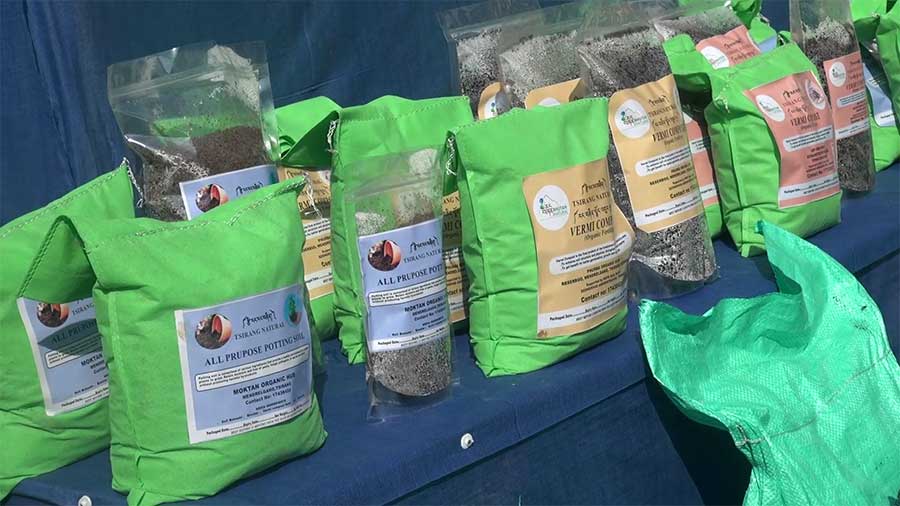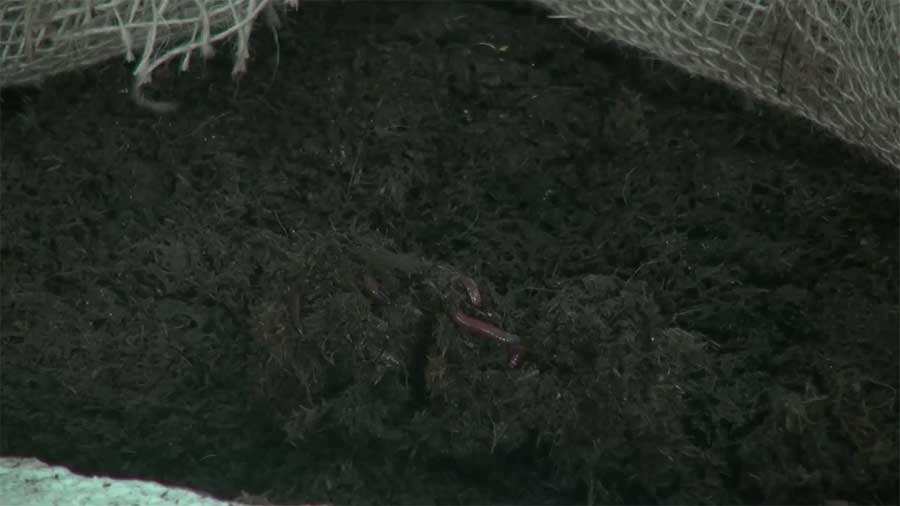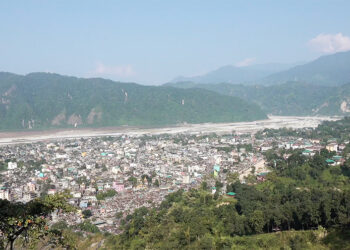
A number of studies have proved that vermicompost is better than traditional farmyard manure in terms of improving soil fertility, and increasing the yield of crops because of its higher nutrient content. Considering the advantages, starting in 2020, farmers in Tsirang have started making vermicompost. And today, it has become an alternative source of income for the farmers there. Vermicompost is a product of the decomposition process using earthworms to make organic wastes into manure.
 Currently, four farmers in the district make vermicompost for commercial purposes. It is prepared by mixing earthworms with cow dung. It takes about three months for the mixture to turn into manure.
Currently, four farmers in the district make vermicompost for commercial purposes. It is prepared by mixing earthworms with cow dung. It takes about three months for the mixture to turn into manure.
“It has been two and half years since I ventured into making vermicompost. Due to favourable climatic conditions, the production has been good so far,” said Nim Dorji, a farmer.
“Initially, the production wasn’t really good but now it has increased drastically. I have sold around four metric tons so far. I have been receiving good feedback from customers,” said Chandra Kumar, another farmer.
Farmers are able to earn a good income by selling vermicompost. A kilogram of the manure fetches them Nu 45.
“Currently, I am producing vermicompost in sixteen composting pits. And there is no marketing issue as of now. I am having a difficult time meeting demand because customers buy all I produce. I sold around 3000 kilograms of manure with support from the district agriculture sector,” said Dawa Sherpa, a farmer.
The district agriculture sector provided technical support and financial assistance through the National Organic Flagship Programme in setting up vermicomposting plants.
“Compared to other organic manure, vermicompost has higher nutrient content. Therefore, it has a greater impact even if we spread thinly on crops and vegetables. So, vermicompost is better over other farmyard manure,” said Kinzang Chophel, Assistant District Agriculture Officer.
If more farmers start venturing into vermicomposting, it will help the country reduce the import of chemical fertilizers and achieve the target of 100 per cent organic production by 2035.
Pema Tshewang, Tsirang
Edited by Phub Gyem






